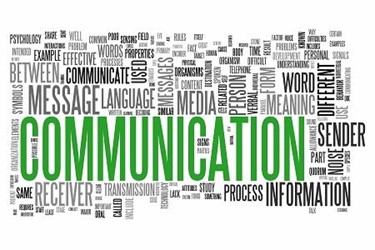The Anatomy Of Quality Patient Communication
By Jim Higgins, Solutionreach

Modern communication has become incredibly diverse. Not only do we communicate in person or on the phone, but we now have the ability to reach out to one another via text message, instant message, social media, the written word, and more. And as communication options have expanded, so has the demand for communication to be excellent. Nowhere is this more evident than the healthcare industry. The impact of poor patient communication cannot be overstated. A comprehensive review of 69 different studies found that poor patient communication can lead to a variety of negative outcomes, including: discontinuity of care, compromise of patient safety, patient dissatisfaction, inefficient use of resources, as well as economic consequences.
Healthcare experts readily acknowledge that communication is one of the biggest challenges in the industry today. There are, however, things healthcare organizations can do to ensure high quality, meaningful communication with patients. The recent State of PRM Report found that using technology—specifically patient relationship management (PRM) software—to connect with patients can improve communication dramatically. This study asked 700 healthcare professionals about their experience using PRM software. According to their responses:
- 79 percent said that communicating through patient reminders improved patient outcomes. Reminding patients of upcoming appointments helps raise the probability that those patients will show up. And regularly visiting the doctor ensures that patients stay on track with their health.
- 81 percent of organizations that use PRM software have a no-show rate of 10 percent or less, with 41 percent seeing no-show rates at 5 percent or lower. This is significantly lower than the average no-show rate which ranges from 10 to 30 percent, depending on specialty. As patients come to their appointments and improve their adherence to care, they also feel more satisfied with and loyal to their providers.
- 76 percent of organizations spend less than two hours each day on the phone. While using PRM software to communicate with patients makes them happier and communication better, it actually takes up less of the healthcare organization’s valuable staff time.
- 79 percent of organizations said that automated recall communication improved the patient experience. Not only do organizations want to get patients to show up for the appointments they have scheduled, but they also want to get patients to come for other needed care that they have not yet scheduled. Doing so will eventually improve patient outcomes as well as the patient experience.
Optimize When You Send Communication
While using PRM software is typically very easy to understand and works well from the start, there are a few things that can be done to make it even more effective. An analysis of over 20 million appointment reminders found that there is an optimal strategy for sending communications that improve the chance patients will confirm their appointment. The timing included:
Sending a weekly reminder. Reminders sent somewhere between one and three weeks before an appointment increases confirmation rates by 126 percent. Best practices recommend sending this message at the three-week mark.
Sending a daily message. This message needs to be sent somewhere between one and seven days prior to the appointment. Doing so adds an additional 26 percent to the confirmation rates. The study recommends sending this daily reminder three days before the appointment.
Finally, sending out an hourly reminder. On the day of the appointment, it is good practice to send a final reminder a few hours before the patient’s scheduled time to arrive. Sending this message three hours before the appointment gives the patient time to manage potential conflicts and still get in to the office on time.
The easiest way to remember the timing strategy is with the number three. Send a message three weeks, three days, and three hours prior to an appointment.
Optimize The Way You Send Communication
Patients are more likely to see and respond to communication sent in the way they prefer. It’s just common sense. Some patients might want to receive a text message. Others love email. There may be patients that still prefer a phone call. There may even be those who like a message through social media! The key is that healthcare organizations need to find out which of the many forms of communication available to you are the most desired by each individual patient. Communication given in the preferred method will boost the response rate and increase the engagement level of that patient. In order to determine which method is best, include that question in your intake forms and update those preferences regularly.
Communication is a critical piece of a healthcare organization’s overall success rate. Fortunately, there have been technologies developed and studies conducted that can help you optimize the way you reach out to patients. Using these tools will facilitate better, more impactful communication and lead to strong, long-term patient relationships.
About The Author
Jim Higgins is the founder & CEO of Solutionreach. You can follow him on Twitter: @higgs77.
